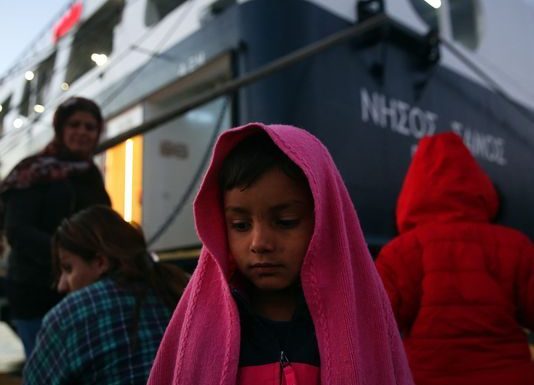

President Trump had to battle the courts and vocal opposition, but by the end of the year, he was able to slash refugee admissions into the United States to historic lows.
From Inauguration Day to Dec. 31, his administration accepted 29,022 refugees, the lowest number since at least 2002, according to State Department data. Comparable figures before then are not available.
The previous low during that time frame (29,468) came in 2002, when the U.S. slowed down all avenues of legal immigration following the terrorist attacks of Sept. 11, 2001.
That decline will continue in 2018 because Trump instituted an annual cap of 45,000 refugees a year, the lowest cap since Congress created the Refugee Resettlement Program in 1980. Presidents have the authority to unilaterally set the annual refugee cap, which has been as high as 217,000 under President Reagan and hovered between 70,000 and 80,000 under the Bush and Obama administrations.
For some, Trump’s drastic reduction represents a campaign promise fulfilled.
“Elections have consequences,” said Mark Krikorian, executive director of the Center for Immigration Studies, which advocates for lower levels of legal and illegal immigration. “This is what he said he’s going to do, and he’s doing it.”
Opponents of the president say the numbers represent a loss not only for would-be refugees, but also for America’s economy and its standing in the world.
Ali Noorani, executive director of the National Immigration Forum, which has advocated for a higher refugee cap, said many Midwestern cities depend on refugees to work in the meat-packing and poultry plants that sustain their struggling economies.
As more migrants are fleeing their homelands, Noorani said now is the worst possible time for the U.S. to retreat from its historic role as a “moral beacon” for the oppressed.
“There are ways to help refugees get to places of safety and begin a new life that serves the American interest,” Noorani said. “Past administrations have been able to do that. This administration is not that so interested.”
Refugees are a special class of immigrants who are granted asylum because they fear persecution based on their race, religion, nationality or political opinion in their home country. They represent a small fraction of the roughly 1 million immigrants allowed into the country each year.
Trump has argued that the refugee program is exposed to fraud and could be used by terrorists to infiltrate the United States. After being initially blocked by federal judges, the Trump administration was able to halt the refugee program for several months to review the system.
In October, Trump signed an executive order that restarted the refugee program, but it included new restrictions that severely limited the number of refugees who could enter the U.S. Most notably, it barred citizens of 11 countries — identified by refugee agencies as Egypt, Iran, Iraq, Libya, Mali, North Korea, Somalia, Sudan, South Sudan, Syria and Yemen.
Refugees from those countries accounted for 44% of admissions to the U.S. in the 2017 fiscal year that ended Sept. 30.
courtesy= usatoday.com

